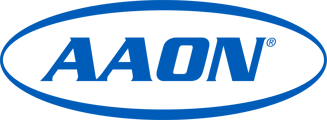Starting up a commercial HVAC unit requires attention to detail to ensure a successful startup.
Here are some common things to check before powering up your unit:
- Visible Shipping Damage: Look for any visible signs of shipping damage, such as dents or scratches, which may have occurred during transportation.
- Levelness of the Unit: Ensure that the unit is properly leveled to prevent operational issues.
- Adequate Clearances: Verify that there is enough space around the unit for servicing and proper operation, as restricted clearances can hinder airflow and maintenance tasks.
- Functionality of Access Doors: Check that all access doors open freely and that handles are operational for easy maintenance and troubleshooting.
- Removal of Shipping Braces: Make sure all shipping braces, brackets, or securing mechanisms are removed from the unit before startup to prevent damage during operation.
- Secure Electrical Connections: Verify that all electrical connections are tightly secured to prevent electrical hazards and system malfunctions.
- Matching Electrical Service: Confirm that the electrical service matches the specifications indicated on the unit's nameplate to avoid damage and performance issues.
- Transformer Tap (for 208/230V units): Check the transformer tap to prevent electrical issues.
- Installation of Overcurrent Protection: Install overcurrent protection devices according to the unit's nameplate requirements to safeguard against electrical faults and overloads.
- Tightened Set Screws on Fans: Check and tighten all set screws on fans to prevent vibration and ensure proper operation, as loose screws can lead to noise issues and imbalance.
- Smooth Rotation of Fans: Verify that all fans rotate freely without obstructions, as restricted movement can impair airflow and reduce system efficiency.
- Locate field installed sensors: Supply and Space sensors will be bundled in the unit control cabinet. These will need field installed. The Supply Temperature sensor must be installed into the supply ductwork, while Space Temperature or Humidity sensor must be placed into the zone served by the unit.
By following these common checks diligently during startup, you can mitigate potential issues and ensure the smooth operation of your unit.
Did you know each AAON product line has its own specific startup form?
You can conveniently download them at www.aaon.com or locate them within the Installation, Operation, & Maintenance Guide specific to each product.
